Articles of 2009
The Liston Chronicles, Part III: The Conquering Sonny
“Artillery is the god of war.”
~ Stalin
The grave of Sonny Liston is located just south of the children’s section at Paradise Memorial Gardens in Las Vegas. His bones lie unsettled beneath the roar of airplanes and avenue traffic. Few visit.
His image can be found tacked up on bedroom walls of teenagers, sprawled out at the feet of an icon. To the uninitiated, the man on the canvas is just a nameless conquest of Muhammad Ali. To casual boxing fans, he is the Big, Ugly Bear taking a dive. To many purists the image is an insult because they know that the Liston of 1959-1960 was among the most fearsome wrecking machines the heavyweight division has ever known.
It is time that we visit his grave, reanimate those unsettled bones, and give Sonny Liston his due.
Boxing aficionados spend hours online, in bars and gyms, and on street corners debating hypothetical head-to-heads between fighters from different eras. The big boys of the heavyweight division can be counted on to detonate the biggest debates. Could Mike Tyson have overcome George Foreman? How about Rocky Marciano vs. Joe Frazier? Would Lennox Lewis have been too much for Jack Dempsey?
It is widely assumed that the greatest heavyweight who ever lived is either Ali or Joe Louis. The high level of Ali’s competition and his penchant for winning critical bouts even after the powers of youth had dissipated are two of the strongest arguments in his favor. Louis’s twelve year reign as champion is likewise a tough achievement to beat. Who is greater is largely a question of resume. Who would have won between them is largely a question of styles.
Max Schmeling beat Louis who beat Max Baer who beat Schmeling. Frazier beat Ali who beat Foreman who beat Frazier. Kenny Norton beat Ali who beat Foreman who beat Norton. Ring logic does not confirm that if “A beats B”, and “B beats C”, then “A will beat C”. That logic is disrupted by the old principle that styles make fights and there are a hundred examples.
This brings us to an interesting elaboration on an interesting question. Consider the twenty-eight linear heavyweight champions from Jack Dempsey to Lennox Lewis. If each of these champions faced all of their peers in the respective primes of their careers, who would emerge with the best record?
Who would be the king of the hill?
At first glance, Liston is an unlikely contender in such a competition. His championship reign lasted through one defense. Sure, he had the misfortune of crossing paths with the greatest sports phenomenon of the twentieth century but he also was foolish enough to take him lightly. Then he squandered (or was forced to squander) his chance for redemption in the rematch. This isn’t the stuff of a great championship reign, and I submit that any boxing writer who lists Sonny’s reign anywhere near the top should be sent packing to Wimbledon –where he can watch those other guys in shorts.
Many boxing critics, however, suffer from Ali-induced myopia. They see Liston sagging on his stool in Miami or they see him splayed on the canvas in Neil Leifer’s iconic photograph and go no farther. They forget that Liston began his disappointing title reign late, that his career was stunted by incarceration through 1957 and Cus D’Amato’s unwillingness to see Floyd Patterson face a real contender. This much is certain: the fighter who stepped into the ring against Cassius Clay was not the fighter who stepped into the ring against Cleveland Williams five years earlier. That Liston, the 1959 version, commands a closer look. He’s the sleeper in our “king of the hill” competition:
Physicality
Size isn’t everything. Dempsey treated Jess Willard like a Kansas tornado would a cull tree. Louis easily chopped down giants like Primo Carnera, Abe Simon, and Buddy Baer. Size isn’t everything -but that’s not to say it doesn’t matter. A new breed of coordinated giants has taken over the heavyweight division. Dempsey and Louis, at 187½ and 201 respectively, may not have had enough physical strength to fend off the less lumbering giants of today, though they would have had the skill… Liston had both.
With a wingspan as long as Lennox Lewis’s at 84 inches, a fist that was by some reports fifteen inches around, and therefore bigger than Willard’s, Carnera’s, both Klitschko brothers’, and Nicolay Valuev’s, Liston’s threw punches like medieval catapults threw boulders.
Walking around at about 230 lbs and trained down to 212½ in his prime, he was by all reports exceptionally strong. George Foreman, who used to spar with Liston in the late 1960s, admitted that the only man who was ever able to move him backwards against his will was Sonny Liston. Liston fought several large men. He did not have to concede space.
Fifty years ago, big men trained down from their ‘walking around’ weight. Today, fewer heavyweights are so disciplined. They seemed to have signed tacit agreements to waltz and posture rather than wage wars and punch. They don’t have to fight fifteen rounds anymore and they barely bother breaking a sweat in twelve. Liston did –and as a group, the men he fought came into the ring in good condition -unlike “Fast-Chomping” Eddie Chambers and Sam “Pizza” last March. Liston’s size and proportions make him a juggernaut. Standing just under 6’1, he had the proportions of a larger man. His musculature was streamlined and functional and the veins popping out of his neck looked like cables. His presence in the ring exuded a bullish power, and his center of gravity, lower than longer men like Lennox Lewis, translated into more concentrated physical strength. It is unlikely that any modern heavyweight would physically dominate Liston. Especially the fat ones.
“When he hits,” an acquaintance told Jack McKinney in 1962, “he hits every cop who ever beat him. He hits every white man who ever looked at him. I think he’s on the edge of violence.” Like Lennox and the Klitschkos, Liston could punch like hell with either hand. Unlike Lennox or the Klitschkos, Liston’s chin was rock solid.
His exceptional physical strength and punching power would serve him well against smaller champions like Dempsey, Marciano, and Frazier. Tyson admitted in the late eighties that he saw trouble with the Liston jab, but he’d have had more trouble coping with Liston’s strength inside. Evander Holyfield’s strategy against Tyson was grounded in the theory that Tyson’s offense required forward motion. So Holyfield muscled him and mounted his offense while Tyson was out of position. If Holyfield’s relatively spindly legs could walk Tyson backwards, Liston would have no problem doing the same.
Sonny would be hard to withstand for any of his heavyweight peers who couldn’t match his strength. Those who could are very few. And even if a Foreman or a Klitschko could deal with his Hulk-strength, they’d still have to find a way to overcome his Doc Bruce Banner boxing brain.
Technical Skill/Experience
Ali himself conceded that Liston’s brutality was scientific. He was unusual in this regard. Joe Louis was arguably the supreme technician among the heavyweight champions, but Liston was at least as well-rounded as Larry Holmes, Tyson, Holyfield, or Riddick Bowe. He was a murderous body puncher, knew his way around inside, was devastating mid-range, and could control most fighters from the outside. His jab was a telephone pole used not to dazzle, but to shock a man or knock him off balance so that Sonny could drive in with power shots.
Liston could punch in combination to the body and head. He could get a bit narcoleptic behind his jab and he tended to follow movers like Clay and Eddie Machen instead of cutting the ring off, but when he bent those knees and cornered his man, his explosiveness could make a grown man cry. And the attack was intelligent. What he lacked in speed he compensated for with leverage, good balance, and shots that were short, diverse, and well-placed. This didn’t change even as he aged. The punches he landed downstairs on Leotis Martin sounded like bowling balls dropping on wet salami.
Even at the end, Sonny threw combinations that are noticeably absent among the “punch-and-wait” style of modern giants. Left hooks were followed with right crosses, right crosses and uppercuts were followed by left hooks. Straight rights to the body were followed by left hooks to the head. He could adjust for distance and find angles. He did not disdain defense. His head moved after punching, he blocked, parried, weaved under shots and got into position to return fire. At times Sonny’s skillful slips and counters could make James Toney raise an eyebrow.
There are several heavyweight champions who have faced better competition than Liston. Ali, Lewis, Holyfield, and Tyson are among them. Liston did gain valuable experience facing several different styles in his seventeen-year career –boxer-punchers, counter-punchers, swarmers, sluggers, southpaws, and super heavyweights.
Intangibles
“When I broke his jaw,” Marty Marshall recalled, “he didn’t even blink.” That was 1954, ten years before Liston met Clay. Cleveland Williams broke his nose in the first round of their first war in 1959. Blood poured like lava but the expression on Liston’s face looked like he was playing poker. In round three he turned the tables. In the rematch, Williams stunned him in round two only to see Liston shut him down seconds later. Liston virtually cleaned out the top ten contenders on his way to Floyd Patterson and avoided no one, even taking the short-end money just to fight them.
How many fighters today would be willing to accept high risk/low reward bouts? Prime Liston built his ring reputation on exactly that.
…..
In the end, it can be argued that Liston was almost a complete heavyweight. Most of the big boys have excelled with fewer assets than Liston had. Like any fighter, he also had a stylistic foil. He had trouble with tall unorthodox boxers with speed. Marshall demonstrated this in his victory over Liston, Machen disrupted Liston’s malevolent intentions by staying away and made him look one-dimensional and ponderous. Angelo Dundee took notes and was convinced early that Cassius Clay had a surplus of essentials necessary to thwart Liston. Clay was taller, had demon speed, mobility, and more power and physical strength than either Marshall or Machen. Clay also forced Liston to turn and constantly reset; and was smart enough to circle left, away from that big jab and left hook. In a peak-for-peak battle between 1959 Liston and 1967 Ali, Ali must be favored. He had the answers.
But there are no supermen. Ali himself was not immune to good strategy and stylistic kryptonite. Master strategist Eddie Futch shined a light on them. Frazier’s high pressure, bobbing and weaving style with that left hook emphasis would always have been problematic for Ali. Ali needed room, had real limitations inside and habitually dropped his right hand. Tyson, who was essentially a gamma-powered Frazier, would also have been problematic for Ali. Marciano knew how to find his way inside and do heavy damage, though there is a good chance that Ali’s corkscrew shots would make marinara out of his face. Bowe was trained by Eddie Futch and that alone could pose problems. If the contest discussed here included rematches, then Ali could be counted on to defeat anyone the second time if not the first. As it is, I’d argue that his record against his peers would place second.
Larry Holmes’s style of fighting most resembles Ali’s, but he had neither the speed of hand and foot nor the virtuosity that Ali had. Unfortunately, he was prone to punch wide and engage, and these would be mistakes against Liston. Holyfield had skills to match Liston, but he was prone to make the same mistake as Holmes –engaging a superior offensive force. The heavyweights, as a rule, seek victory less by finesse than by strength and power compared to other divisions. It is unlikely that any of the champions will beat 1959 Liston by the usual means. Those are his terms. Still more ominous is the high-tech engine beneath the artillery. Simply put, Liston may be too powerful for the skilled champions and too skilled for the powerful champions. To beat him, it takes a rare breed of heavyweight –the rarest, the Greatest.
Let us revisit the question: If all of the linear heavyweight champions of the modern era faced each other in their respective primes, who would be the king of the hill?
The shadow of Sonny Liston is emerging.
If you missed part one, click here: https://www.tss.ib.tv/boxing-article/6857/liston-chronicles-part-rising-sonny/
And here's the second installment: www.tss.ib.tv/boxing-article/6869/liston-chronicles-part-setting-sonny/
-
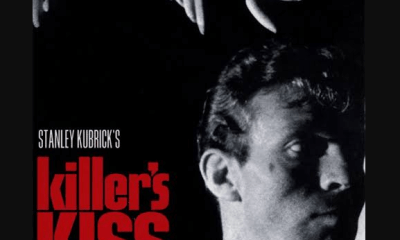
 Featured Articles3 weeks ago
Featured Articles3 weeks agoThe Hauser Report: Cinematic and Literary Notes
-
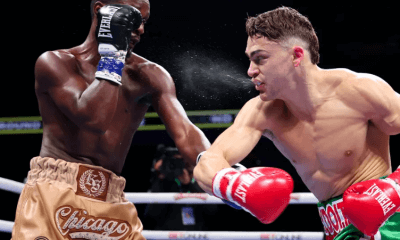
 Featured Articles4 weeks ago
Featured Articles4 weeks agoOscar Duarte and Regis Prograis Prevail on an Action-Packed Fight Card in Chicago
-
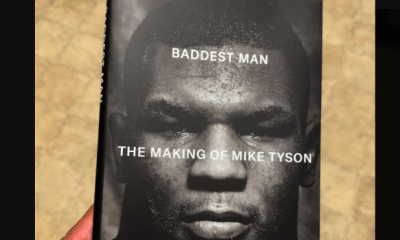
 Book Review3 weeks ago
Book Review3 weeks agoMark Kriegel’s New Book About Mike Tyson is a Must-Read
-
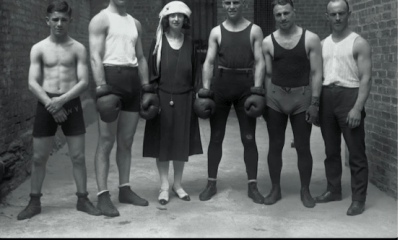
 Featured Articles1 week ago
Featured Articles1 week agoThe Hauser Report: Debunking Two Myths and Other Notes
-
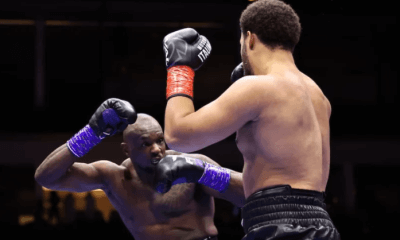
 Featured Articles2 weeks ago
Featured Articles2 weeks agoMoses Itauma Continues his Rapid Rise; Steamrolls Dillian Whyte in Riyadh
-
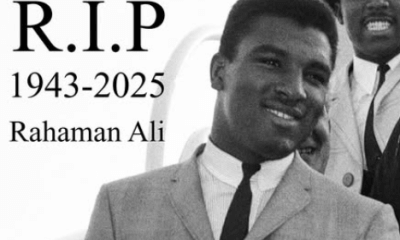
 Featured Articles4 weeks ago
Featured Articles4 weeks agoRahaman Ali (1943-2025)
-

 Featured Articles4 weeks ago
Featured Articles4 weeks agoTop Rank Boxing is in Limbo, but that Hasn’t Benched Robert Garcia’s Up-and-Comers
-
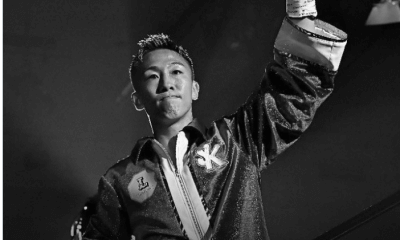
 Featured Articles3 weeks ago
Featured Articles3 weeks agoKotari and Urakawa – Two Fatalities on the Same Card in Japan: Boxing’s Darkest Day














